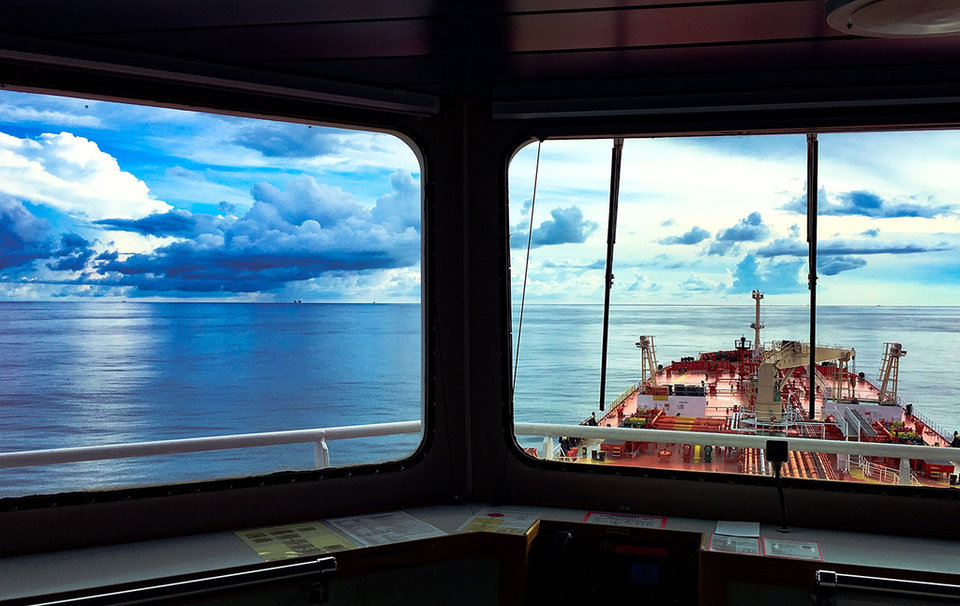TECHNOLOGY
ECDIS: is the industry ignoring an important update?
A costly experience left shipowners wary of upgrading their electronic chart and display systems, and as a result, many may be missing out on an important technology. Eva Greyfinds out more from Oliver Schwarz, ChartWorld International business development director
since its introduction to the market in 2009, the Electronic Chart Display and Information System (ECDIS) has become the de-facto navigational chart system used by naval vessels and ships worldwide.
The electronic system offers many advantages over paper charts, such as real-time display of information, easier passage planning, prompt danger alarms and overall enhanced navigational safety. The International Maritime Organization (IMO) made ECDIS mandatory in 2009, followed by the carriage requirement in 2012.
The first major update to the software, mandated by the International Hydrographic Organization (IHO), was initially scheduled for completion in 2016, but delays from ECDIS manufacturers forced the deadline to be pushed back until September 2017. Beginning from that date, all new installed systems had to be compliant with new standards, which address some of the biggest problems with the old system, including alarm fatigue on the bridge.
However, existing ships did not have to perform the update, and as a result many shipowners are stuck with outdated systems, lacking in user functionality.
“In general, the industry experience has been very, very bad,” says Oliver Schwarz, business development director at Chartworld International.
“Most of the manufacturers have completely screwed up on this. So now there is a new software out there, which [shipowners] don't have to install, and that's why they don't. Because the previous experience was so bad they won't want to do it again on their own means.”
A costly exercise for shipowners
At present, the majority of the world’s fleet equipped with ECDIS is using the old software, released in 2008. When IHO’s new performance standard (known as Presentation Library Edition 4.0) became mandatory for newbuild vessels on 31 August 2017, the majority of the manufacturers “simply weren't ready”.
The new S-52 standard determines how electronic navigational charts (ENC) data is displayed on the ECDIS screen through symbols, line styles, colours and other visual cues. Updating the presentation library ensures that what the mariner sees on the screen is displayed in the same way across all approved makes and models of ECDIS.
When developing new software, ECDIS manufacturers are bound to these IHO standards.
“They didn't have the latest software update approved, which means they were too late,” Schwarz says. “The majority of the old ECDIS machines were too old and too slow, which means they were not compatible with the latest software update. And the update could not be done by the crew, which means the manufacturer would have to send engineers on board.”
The majority of the old ECDIS machines were too old and too slow
Days ahead of the August implementation deadline, shipowners and bridge system suppliers were lobbying the IMO and IHO, asking for more time. At that point, the deadline had already been extended once, by one year.
Performing the mandatory update came at a big cost to shipowners.
“Many of them were confronted with the cost of updating the hardware, the cost for the software, and the cost of the engineers to come on board and perform the update. And this was a mandatory update so they had no choice, they had to do it.”
Now, the experience has led to a widespread assumption among shipowners that if they are to go ahead with a voluntary upgrade of the ECDIS system, they will be burdened with the same costs.

Svein Kleven is senior vice president of engineering and technology for Rolls-Royce. Image courtesy of Rolls-Royce
Responsibility lies with the manufacturers
Schwarz points out that skipping the update doesn’t pose any immediate dangers, however the overall user experience is less satisfying and system alerts can be a lot more intrusive on the old system.
“Firstly, the crew have to deal with more alarms on the bridge, which potentially could be a source of danger,” he says.
“If they would do the voluntary update to the latest software, they would make the alarm message handling and many of the features much more practical, and potentially in case of an emergency, they would have better information at their fingertips and they could make a more informed decision.”
We have wasted the opportunity to provide a better user experience
The responsibility lies with the manufacturers to make the benefits of each update appealing to shipowners.
“We as manufacturers have wasted the opportunity to provide a better user experience to the industry and the latest software, which is much better than the one they are currently using,” Schwarz admits.
As a result, even though shipowners today can voluntarily upgrade at any time of their choosing, many lack an adequate regime in how to update the software on their on-board computers. This, together with fears about cost overruns, can act as a major hindrance to improving navigational safety and ensuring a consistency in how the data is displayed and interpreted at sea.